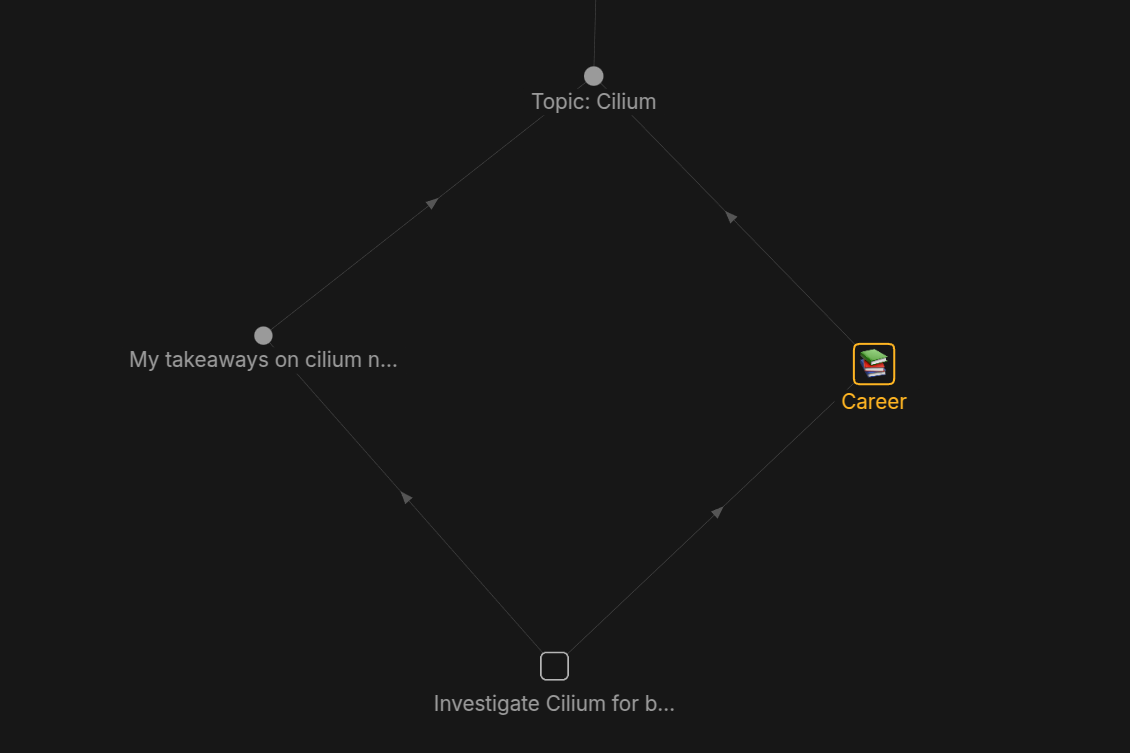Beyond Bookmarks: How I Built a Resilient Personal Knowledge Base

Like most engineers, I had a secret: the digital graveyard of good intentions. It was a sprawling, chaotic mess of bookmarks, half-read articles, and notes scattered across a dozen different apps. I told myself I was saving them for later, but I knew the truth. It wasn't a system; it was a data hoard, and the low-level anxiety of not being able to find anything was a constant cognitive drag.
It was a system that failed every professional standard I hold for my work. So, I decided it was time to build a "second brain" with the same principles I'd apply to production infrastructure: it had to be durable, queryable, and trustworthy.
The Search for the Right Tool
My first rule for this project was simple and non-negotiable: offline-first, and I own my data. My thinking couldn't depend on an internet connection or someone else's cloud. This immediately ruled out Notion and its peers.
This led me down the rabbit hole of local-first apps:
I started with Obsidian. It's incredibly powerful, but I immediately saw it becoming another side project. I knew I'd spend weeks tweaking plugins and themes instead of actually writing. I needed a tool, not another part-time sysadmin job. The closed-source nature and its licensing also felt off for something so personal.
I bounced off Logseq next. I love the idea of networked thought, but its outliner-first approach just didn't feel right for how my brain works. Not all my thoughts are neat bullet points; some are long-form, some are structured data. It felt like the tool was trying to force my thinking into its mold.
That's when I found Anytype. It just felt different. It met my core principles—offline-first, private, E2EE—but its philosophy was the real hook. It isn't built around pages; it's built around Objects. A 'Project' is a different kind of thing than a 'Meeting Note', which felt much closer to how I think about systems.
And the clincher? I could self-host my own node. Having my "second brain" running on my own hardware in my homelab… that's the kind of resilience and ownership I wanted. It just felt right.
The Architecture: My "Fork" of the PARA Method
The real breakthrough came when I decided to throw out parts of the standard PARA method[1] that weren't working for me. I needed to integrate my tasks directly with my knowledge, because my learning is almost always tied to something I need to do.
This led to my personal fork, built around these objects in Anytype:
Project&Archive: Simple and standard. AProjecthas a clear goal. TheArchiveis for everything that's done.Area of Focus: My name for "Areas." It feels more intentional.Career,Roaming Root,Health,Finance, these are some of the ongoing domains of my life.Task: The atomic unit of action.Knowledge Note: This was the biggest change. I threw out the vague idea of "Resources" and focused on creatingKnowledge Notes, which comes in two forms: atomic notes with specific insights, and Hub Notes that act as curated indexes for broad topics likeDisaster RecoveryorKubernetes Networking.
Putting It Into Practice: From Task to Knowledge Hub
My workflow now starts with action. Let's say I have a Task: "Investigate Cilium for better cluster networking."
While researching, I found a great article. Instead of just bookmarking it, I create an atomic Knowledge Note, writing down my own key takeaways. Then, and this is the crucial part, I link that new note directly back to the original Task.
Next, I open my Hub Note for 'Cilium' and add a link to my new atomic note. Over time, that hub becomes my single source of truth for all things Cilium. Finally, I link the 'Cilium' hub to my Career Area of Focus, because mastering it is a professional goal.
The result is a powerful graph. I can trace a high-level career goal right down to a specific insight that helped me complete a concrete task.

A Flatter System: Why I Don't Use Tags
I also abandoned tags. Managing a complex tag taxonomy felt like another chore. Instead, I use Anytype's inline queries. On my "Roaming Root" page, a simple query shows me every Project with "Blog Post" in the title. It's clean, direct, and I don't have to remember anything.
From Filing Cabinet to Thinking Tool
This isn't just about being organized. It's about building a system that works for you, especially under pressure.
Imagine a production incident with Kubernetes network policies. In my old system, I'd be frantically searching a messy bookmark folder. With this system, I open my 'Kubernetes Networking' Hub Note. Everything I've ever learned on the topic is there, curated by me, linked and in context.
I'm not just searching; I'm querying my own understanding. It's a system I can trust when it matters.
Conclusion: A System Worth Trusting
This whole process has always been a work in progress, but the shift from passively hoarding information to actively curating knowledge has been huge.
The real goal was never "perfect organization." It was building a system I could trust.
As an infrastructure engineer, my job is to build reliable systems so my team can trust them. I realized I needed to do the same for my own knowledge. The result? A significant reduction in that low-level anxiety of knowing you've saved something important, but have no idea where. My knowledge base has become a reliable partner.
Ultimately, it doesn't matter which tool you choose. What matters is being intentional. Your personal knowledge base is one of the most important systems you'll ever design and maintain.
It's worth making it resilient.